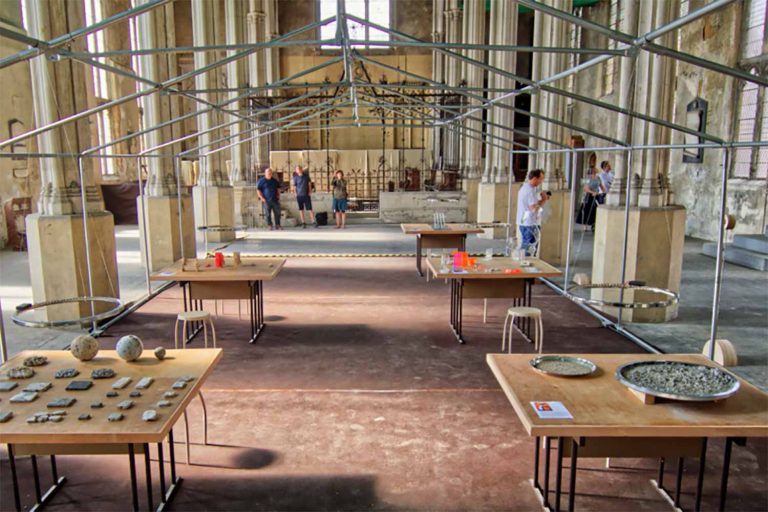‘Bird’ and ‘Skyscraper’ hay sculptures in Victoria Park
Emerging from the still water, Romanian artist Erno Bartha’s eye-catching sculptures have towered the West Lake in Victoria Park for almost ten years.
When coasting the West Lake in Victoria Park, two sculptures catch passers-by’s curiosity: the figures emerge from the water and impose their twisty profiles on the scenery. What do they represent? Who brought them to the park?
The two sculptures called ‘Skyscraper’ and ‘Bird’ were created by Romanian sculptor Ernö Bartha as part of a series of cultural activities across London during the 2012 Olympics, called 2012 Cultural Olympiad. The Cultural Olympiad, organised at the request of the Olympics Charter and funded by several organisations, included 500 events nationwide.
The sculptures, wholly self-funded by the artist, were created as part of an Olympics project called ‘Nature in the City’, with Bartha’s works being the winner in an art competition organised by the Romanian Cultural Institute.
The towering structures have a simple physiognomy, resembling abstract sketches. They have become natural hosts for the lake’s wildlife, and it is common to see pigeons, ducks, and seagulls resting on them.
The ‘Bird’ is the more complex of the two, with a primitive, almost dinosaurian, look. A simple loop represents the body of the bird, from which a long, thin neck extends upwards to the sky and a single elegant leg reaches downwards to the water.
The ‘Skyscraper’ is one curvy line, with a small loop in the middle: reaching for the sky but grounded in its root. The concept of a man-made object is broken down and is engulfed by nature.
Despite the starkness of the lines, the sculptures blend in perfectly with the environment. When entering the park from the small side entrance on Old Ford Road, they are barely noticeable until you get closer to the water. Their slender shapes resemble tree branches, camouflaging with the surrounding trees.
This scenic effect is achieved by the choice of material used. Made of hay and enforced with steel frames, the two sculptures aim to rediscover the texture and smell of ‘unspoiled nature’.
Walkers and joggers might feel transported to faraway lands when admiring these forms, where nature dominates the landscape and the presence of people is barely felt.
Impressive at each hour of the day, early morning is the best time to observe them, before the crowds arrive. When the sunrise starts colouring the lake, their distinct shapes start dominating the scene. On a frosty autumn or winter morning, the lake freezes and the twisted shapes reflect starkly on the ice while the birds walk on the frozen water.
The project was meant to represent a bridge between men and nature, and the need to re-connect these two realities. A topical issue these days.
Originally intended to be displayed for one year until 2013, they received their own plaques in 2015 and next year will mark a decade since they were installed in the park.
Ernö Bartha, born in 1985 in Cluj-Napoca, Transylvania, graduated from the ‘Ioan Andreescu’ Academy of Visual Arts. His collection of works features a variety of materials like bronze, stone, steel and metal and the use of different mediums like painting, photography, film and mixed media. In addition, his work often mixes modern shapes with traditional material and his unique hay sculptures are a result of this style.
Since they were brought to the park by the Romanian Cultural Institute, the statues blended into the lives of Victoria Park’s visitors and birds dwellers. Due to be restored soon, not only they will be a lasting memory of when East London was at the centre of the international sport scene, but they will also represent a bridge between humans and nature, transporting passers-by to a surreal world.
If you enjoyed reading this, then read our article about the unveiling of the first statue of black woman statue by a black artist at Three Mills Green.








